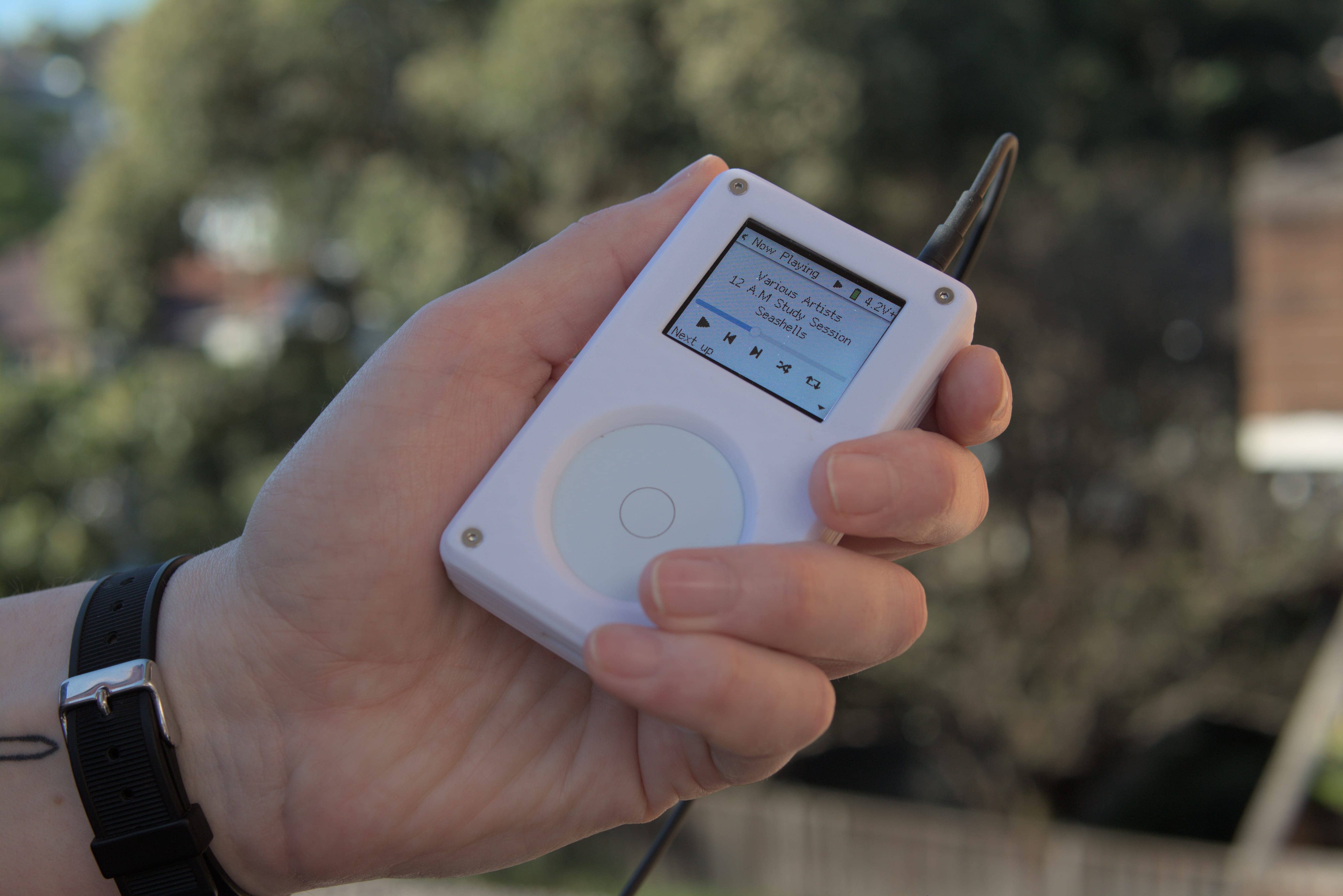darmok & jalad at tanagra
Shaka, when the walls fell
Leykam and Howard when they raised the roof.
Nice project. $249 seems a bit high, but I guess it’s like the Fairphone, they can’t save as much as the large manufacturers do.
It’s a project by an Australian team, so one would assume two things:
- It’s in Australian Dollars.
- Australia has experienced severe hyperinflation overnight (or earlier today, for many of us reading this)
Can I get some sauce for #2? News says nothing of it
It was a joke.
The only source is the absolutely bonkers price – that’s why it’s an assumption.
In all seriousness, if I were to release open source hardware and software, I’d charge a price like that to ensure that my time would be reasonably compensated for what’s clearly going to involve small production batches of hand-built-in-the-first-world items.
I think it has something to do with Taylor Swift
It all has to do with Taytay Swizzle. WAKE UP SHEEPLE! She will be crowned Empress of the World by chief Illuminatus Warren Buffet and the antiChrist Catholic puppet Joe Biden during the Super Bowl halftime show! Only Trump and Dildoboy Nugent can save us!!! /s
What hyper inflation? I think you need to check your sources mate.
It’s a neat project. Costs as much as an iPod :P
Holy f*** $250? Wow well it is not for me then :(
I’m genuinely curious if someone’s published a BoM cost breakdown, I’m wondering if there’s a couple of super high tickets items in the like the scroll wheel and custom PCB cost.
The cost of the scroll wheel cannot possibly be more than 10€ and the pcb cannot be more than 1€ battery is about 4e and display can be 7-8, chip is 2-3e and passives, connectors etc brlow 5. The manufacturing costs of the thing are likely below 40€, even in small volumes. Assy costs are probably about 20% of the total.
Part of the high cost may be investments in moulds for the casing and r&d cost.
Yeah, I took a bit of a poke last night, there’s a couple of ICs in there that could add up a bit I guess, but even being generous I wasn’t getting much last 80.
The cases I saw had the look of a 3D print about them. Original goal seems to have been around 10000, so maybe they’re amortizing the r&d across 40 units, little bit of profit and then went and sold 400 of them - nice win for them if so!
To make it clear I don’t begrudge them their profit especially as they’re open sourcing the thing. The concept and high price has got my creative side going for sure, an ESP32-S3 pro dev board looks like it could handle an sd card, screen, MP3 decode and output to an I2S amp all by itself + BT headphones and WiFi track downloading and battery charging. Slowly talking myself into building a portable podcast machine.
Hey, one of the people working on Tangara here. The case we’re shipping with will be CNC’d polycarbonate, though the same design also works for home 3d printing.
The price is a lot of little things adding up, and we want to be able to do smaller runs post-campaign and still have it be worth our time. I also wish it could be more affordable, but that’s how it be with indie electronics.
Good luck if you do decide to make a little podcast machine! Just be aware that afaik ESP32-S3 can’t do bluetooth audio (see: https://github.com/espressif/arduino-esp32/issues/8675).
Thanks, really appreciate the feedback! Really good luck with the project, love seeing these kind of devices making it into the wild. Yeah totally appreciate the nature of indie electronics/manufacturing in general and your work totally makes it easier and more approachable for a lone wolf like myself to churn out something functional!
Thanks for heads up on the BT audio, my little investigation the other night lead me to the datasheet for the ESP32-S3, the list of peripheral options is amazing, I’m sure I’ll figure something out!
Thanks again and good luck with the project!
Looks like the first iPod, the brick.
It sounds like that was intentional.
Is that a click wheel? I’ll be surprised if apple won’t sue them over that.
Capacitive touch wheel.
Well if Apple owns IP on it, I guess it would have to be a patent. The hardware would be quite different I guess, so would be a design patent with a max of 15 years from 2001 when the first iPod was released.
I’d guess Apple wouldn’t sue, for a design out of patent (so no obligation to defend it) and that they don’t even use anymore. (I ANAL)
Cool cool cool. I miss my old iPod with the click wheel, so I hope you’re right. I’d love to get an open-source hardware device using one now.
It would be interesting to use one and see if it feels the same. The original iPods had this very specific feeling to them. If it was replaced with say a glass capacitive circle or it if had different haptic feedback then it would feel quite different.
20 hour battery life of use is actually far better than I thought it would be. Wonder what the pi equiv build would bu
That’s actually so low imo. It just plays music and doesn’t connect to internet right? Should last for like a week at least.
20 hours of playback. Not 20 hours of idle.
Hmm if it’s 20 hours of constant playing then that’s much better
It needs a serious optimization. iPod Nano 7 lasts 30 hours with a 240 mAh battery. So with 2200 mAh, it should last like 10 days at least.
Ipod shuffle lasts 12 hours with an even smaller battery
It has a 150 mAh battery, so even with Shuffle’s optimization level, 2200 mAh should still last more than a week for Tangara. I gave Nano 7 as an example because it’s what I have. Of course I’m not expecting Apple level optimization but they can do much better. Otherwise 2200 mAh is an overkill for such a device.
The Pi in any form is a much larger system with a whole lot more clock cycles, larger architecture, and more peripherals like a full memory management unit, graphics hardware, etc.
On the flip side IIRC most ESP32’s are 210MHz and just dual core. It is microcontroller versus microprocessor, so probably 10× less power or more.
A Raspberry Pi Pico would be sufficient for this. It uses the RP2040, which is comparable to the ESP32, minus the WiFi.
Actually not really. The pi pico has no functional, good low power states currently developed. That is essential for a mobile device. A pi pico would simply drain the battery in sleep mode very quickly.
Tons of MCUs could do the job. Some STMs would also be good for it. The pi pico is more focused at non-mobile applications though at the moment like a very cheap general MCU for things that are USB powered or mains powered.
For something like this, you would use the RP2040 chip rather than the whole Pi Pico module. The RP2040 uses 180µA in its lowest power sleep mode and the flash and regulator will use a few more microamps. The battery would still last for over a year in standby. Of course it could just be turned off when not in use. Without an operating system, the boot time should only be a fraction of a second.
The ESP32 uses 800µA in sleep mode if you want to retain the memory contents or 10µA with only the RTC memory retained.
A low power STM32 would use orders of magnitude less power in sleep mode than either the RP2040 or ESP32 though.
Yes, I know. I have designed with the RP2040 and 180μA is extremely high power usage for deep sleep mode.
The ESP32 has far more sleep modes than that that each use different power, you are just talking about its light sleep: https://docs.espressif.com/projects/esp-idf/en/latest/esp32/api-reference/system/sleep_modes.html
You are comparing the deep sleep of the pi pico to the light sleep of the ESP32 where the coprocessor is still running. The rp2040 light sleep mode consumes 7mA. It is literally orders of magnitude different. https://learn.adafruit.com/deep-sleep-with-circuitpython/rp2040-sleep (they only did light sleep.mode because deep sleep wasn’t even available)
As far as the professional chips, they cost on average far more for less and less sleep gains. (A lot of the L series of stm is like 15€ per chip)
You would definitely use deep sleep for this as you would only wake it up to start using it with a button press. Whether they would use light sleep or deep sleep, there is an order of magnitude difference in sleep power consumption.
Tembra, his music downloaded. Darmok and Jalad with the AUX cable.
Shaka-khan, when the beat drops
Arnock, on the night of his joining.
OpenNugget 🐍
I will always prefer my iPod Mini with extra storage, new battery and Rockbox like this guy did, and the reasons are:
- better overall build and audio quality
- way cheaper (70-80$ vs 249$)
- better software support (Rockbox is FOSS and has been going on for ages and it’s not gonna stop)
- it actually upcycles old hardware instead of buying new devices and creating more e-waste
- nostalgia value +100 points
Well damn. Might be what i was looking for. Gotta know if it had Gapless Playback before purchase though
The only reason i’d consider this is if the soundcard was premium with DAC and amp included. Otherwise that piece of junk brings nothing to the table. Yes this thing has it, but its nowhere near premium.
Nobody said it was.
This is all well and good, especially from a nostalgia perspective (in addition to the general pushback against cloud everything); but what I miss most about portable music nowadays is the lack of decent inline remotes (think early 2000s Sony MiniDisc players).
The player stated in your pocket, and the remote handled everything, volume, playback, and even had a dot-matrix screen to identify and navigate playlists!
I had a Sony portable CD player that I used to use for listening to audiobooks as a kid. It also had an inline remote with a screen. One notable feature it had was custom screen messages (dunno why you would need one tbh). Nothing beats setting the remote so that there was an ASCII dick on the screen all the time, and then have your dad give you the look of disappointment afterwards.
At some point the remote was lost, and the laser assembly broke. I miss that player dearly
You need a smartwatch.
I have one - but its touch screen is no replacement for bespoke, tactile controls.
Sound like you just have a smaller smartphone on your wrist. My smartwatch has a black and white (not grayscale) display as well as 5 physical buttons and I wouldn’t have it any other way.
If you’ve never used an inline remote, it’s really hard to explain why they were so much better from a UX perspective than what’s available now.
If I want to control media on my smartwatch, I need to flick focus on my wrist - usually stopping me from being able to fully use that hand, identify the right controls on the touch screen (and that it’s even on the right screen, and not obstructed by notifications) and hope that they register correctly.
Those old inline remotes were basically a useful ‘Bop It!’; control inputs varied: twist a dial, tilt the end, button press, slide, scroll dial and provided full tactile control which could be truly used one-handed (when clipped to my shirt).
It is a true shame that they were left by the wayside, when multiple devices ended up amalgamating into the modern smartphone.
I had and loved my minidisc player back in the earlie naughties. The remote was great, but there was no standardization and it became a single point of failure. If and when it broke, you’d have to get the specific control for your MD player.
It kind of lived on in spirit with in-line volume/call controls for wired headsets on the 4-conductor 2.5mm jack. Those were cool, and standardized.
We could have a return to that, with USB-C, but I don’t think it’d see much more than a niche adoption. Smartwatches and fitness trackers do it just as well, and once you know the layout, you can skip/pause without looking. Plus most cordless headphones/earbuds have integrated controls as well. Streaming at home you have voice controls, streaming in the car they are on the steering wheel or stereo.
The wired in-line remote is really only even applicable to the already niche community of users who refuse to adopt wireless. Considering most of those people are strict audiophiles, only something that has a quality integrated DAC would appeal to them. Thats a pretty specific product for a pretty small market. Not saying it wouldn’t be feasible, but it’d certainly not be cheap and simple.
Tactile feedback is great though. I’m totally with you there…not many watches have physical buttons that you can locate and activate completely unaided by vision.
Hopefully people take the source and release a full walkthrough on doing this with an entirely off-the-shelf design. I’ve got a full electronics workshop and two 3d printers and would LOVE to assemble my own music player with open source designs.
I haven’t seen a device that takes full sized sdhc cards in at least a decade.
Brings back fond memories of rockbox on my sansa.
Now you too can play Doom on the worst screen imaginable!
With the worst controls imaginable to boot :)
New speedrun challenge!
Ayo that was amazing on the Sansa Clip+.
Rockbox was the shit.
Breathed so much life into my iRiver. And I always had to defend the thing: “it’s older than iPods! It can’t be an rip-off”
Rockbox *is…
It’s still going.
I use rockbox on a late ipod classic. I find it a very good listening experience, but I am interested in switching to open source
I’m assuming you mean hardware? Because Rockbox is already FOSS (GPLv2)
oh shit rockbox I had forgotten about that
Rip Creative Nomad.
Cute, but what problem does this solve? Regardless of what you feel about any particular platform, consolidating multiple pieces of functionality into the highly integrated smartphone platform was a major step forward in mobility. This just feels like a regression.
Some people like to enjoy their media without having to use their phone and prefer to keep their smartphones as strictly communication devices.
It allows you to switch off entirely when you so desire in addition to saving smartphone battery life.
This in addition to being able to use 2tb of removable storage dedicated to music and a headphone jack are significant advantages for me. Not that I would purchase this particular device but I understand the appeal of devices that perform one function such as DAPs and ereaders.
Some people like to enjoy their media without having to use a smartphone, they prefer to keep their smartphones as strictly communication devices.
Okay, I guess that’s fair. I can see this useful for being out for a run or whatnot. I’m not sure I find it quite comparable to an e-reader, since the screen on an e-reader provides a decidedly different experience from a smartphone both in size and readability.
It comes with a 3.5mm audio output for starters.
There are $10 adapters that convert USB-C to a 3.5 mm port, if that is critical. Or just get any of the wide variety of Bluetooth devices on the market.
A 3.5mm jack costs fractions of a cent, and I don’t have to carry around a $10 dollar adapter to solve an artificial problem.
Bluetooth sucks badly, and the wide array of devices on the market have batteries that need to be charged. I’ll stick with the best option if i can thanks, 3.5mm jack.
Okay, but in exchange you’re carrying around a $250 device that is much large than the adapter? That was my point. And for many people, myself included, Bluetooth devices do decently well even if they have their drawbacks.
Fair enough. I guess my point is that a modern phone should have both Bluetooth AND a 3.5mm jack.
You could say this about any type of music player tbh (LP, cassette, etc.)
Yup, this just feels like someone trying to make the cassette cool again. There’s a reason it fell out of fashion. If someone wants it, so be it, in the end that’s their business. I just think it’s a little silly to be sprouting more devices (and associated e-waste) when people can stay consolidated in one compact package.
Idk, I like cassettes, so I don’t mind being a little silly sometimes
I think it can at least carry 2TB of offline music for you if you still like owning your own music if that’s your thing. It’s an option, nothing wrong with that
Again so can a smartphone so what problem does this solve?
Heck it can use FOSS to download another 2 TB when your catalog grows.
Maybe for people who are not interested in smartphones? Could also be an educational project if you want to dive into embedded systems. You’ll also save battery on your phone.
Not all smartphones have the storage to store 2TB of songs. Phones with micro SD cards are rare as platinum these days.
Lots of chinese phones still have an SD card slot, although its usually in the same location as the second SIM card, so you have to choose.
My phone is like this and I use the dual SIM feature, as the internal memory is 256gb anyway.
Below you will find my highly researched list of advantages over the typical smartphone:
- Headphone jack
- Mucho storage space
- Works without internet connection
- Free software purity (I don’t know, ask RMS)
- Coolness
Tbf you can still get a phone with a headphone jack, and with a ton of space. Not that you need a crazy amount for music anyway.
Also confused about the internet connection part. Even if you only use music streaming services, most let you download your music for offline listening.
I’m okay with the idea of a piece of tech meant to do a single thing, do it well for hours on end on one charge, while not spying on me in creative ways


















